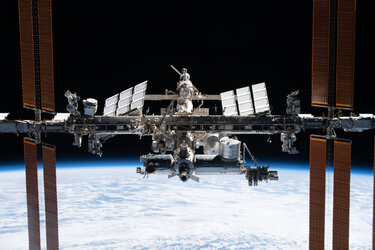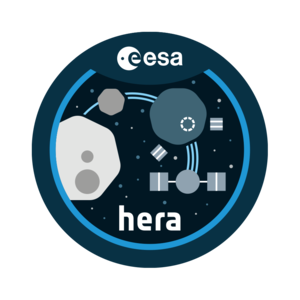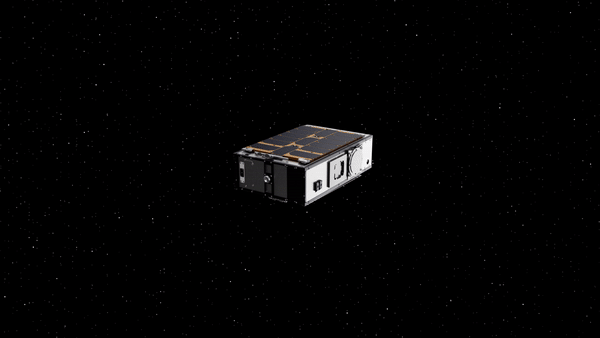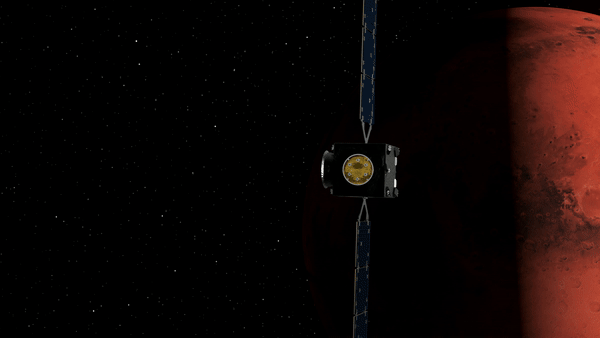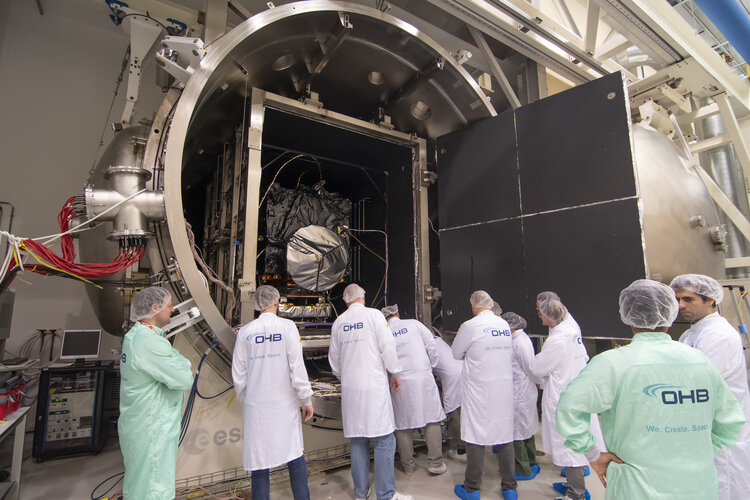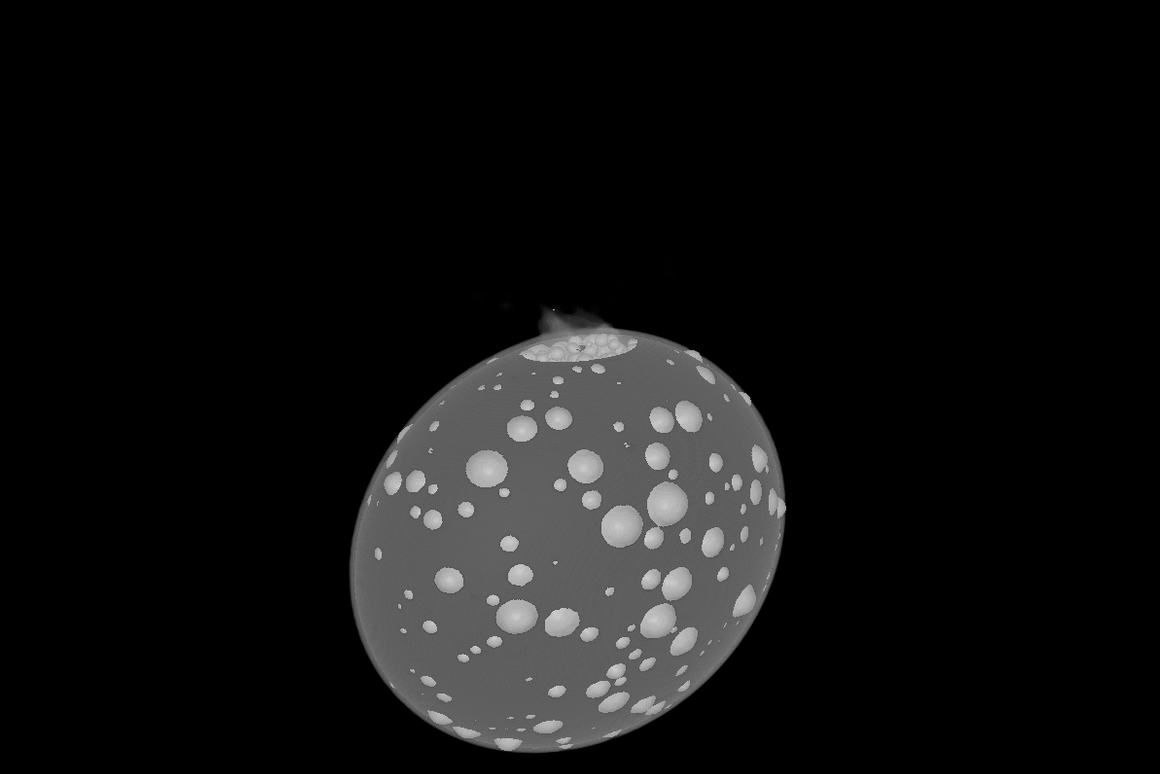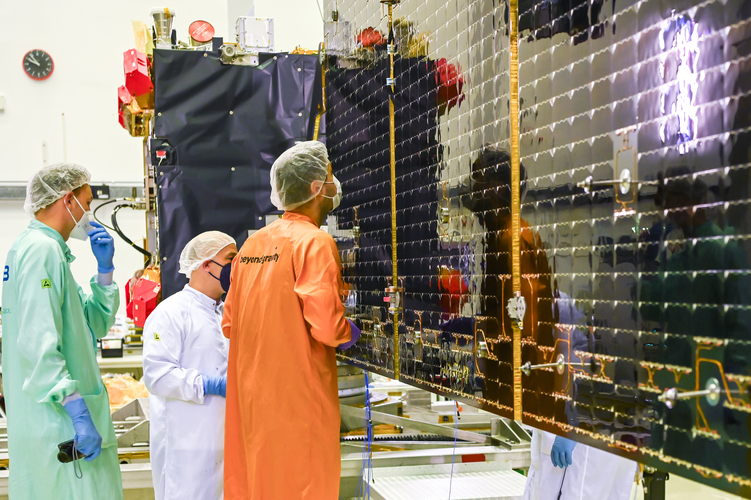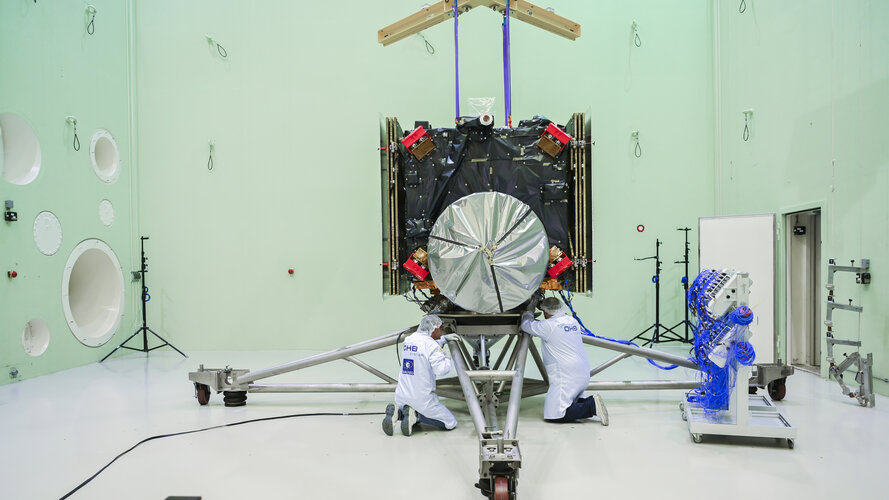Hera spacecraft trio to fly safe with inter-linked radio
ESA’s Hera mission for planetary defence involves not just one spacecraft but three: two shoebox-sized CubeSats will fly up to a few dozen kilometres away from their mothership around the Didymos binary asteroid system. Keeping this trio in communication to fulfil their own mission needs while also ensuring their safe separation is the task of a novel inter-satellite link radio technology, produced by a Portuguese company best known for terrestrial drone systems.
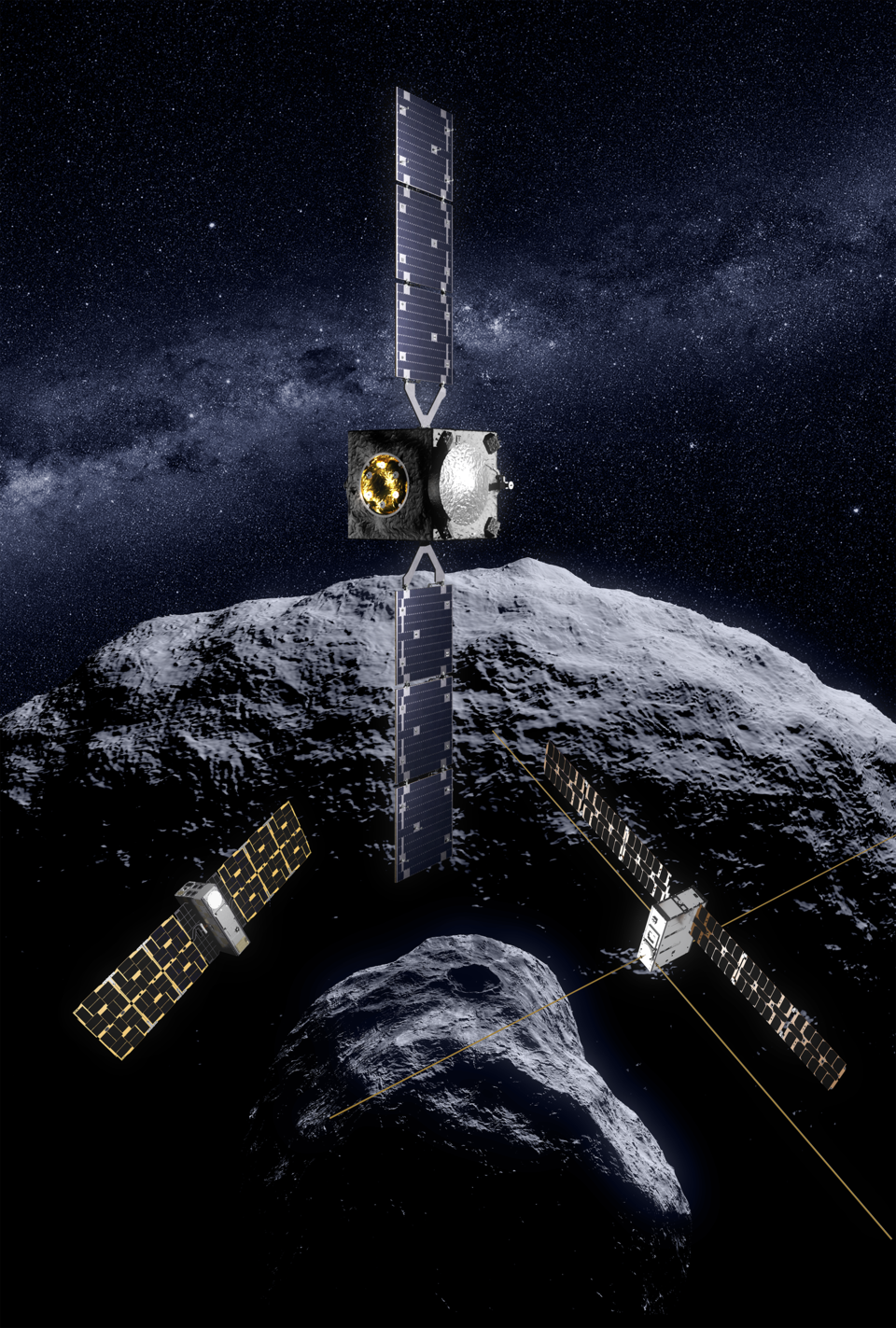
“There are lots of systems for radio frequency communications between spacecraft and the ground, but not really between spacecraft themselves – it was something of a gap in the market,” explains Pedro Rodrigues of the Tekever company, whose head office is in Lisbon.
Started by computer science and electronics engineering students in 2001, Tekever had its initial focus on developing software to be run on multiple networked platforms, subsequently expanding into aerospace and defence markets.
Today the company has grown into one of Europe’s leading ‘surveillance-as-a-service’ UAV suppliers.
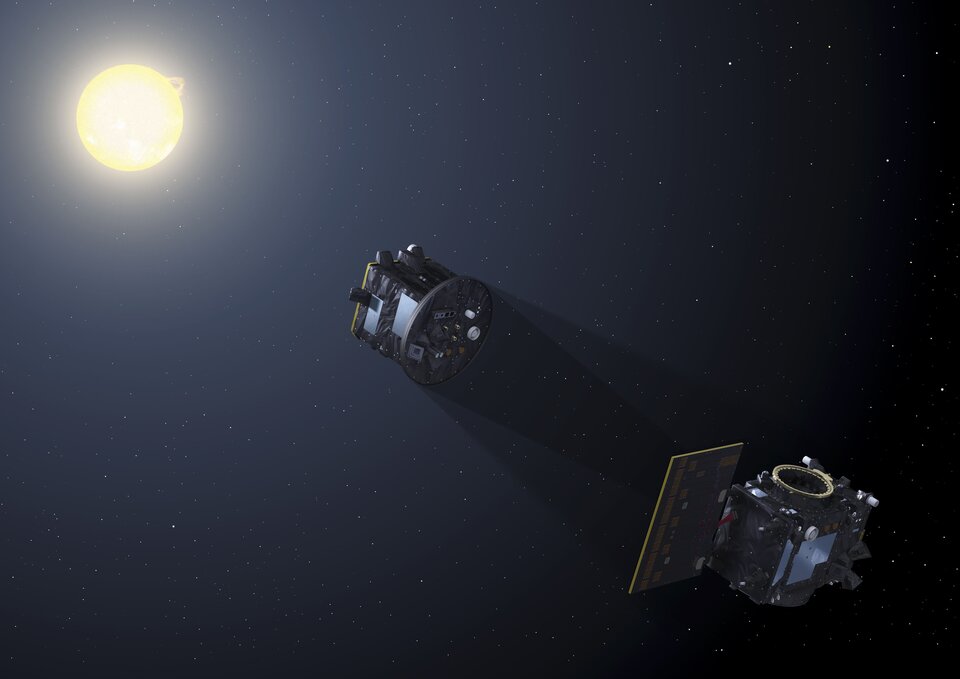
Pedro Rodrigues adds: “Back around 2009 we had software-defined radio equipment used in terrestrial tactical radios. It allowed platforms to communicate while also simultaneously exchanging ranging information, so they stay continuously aware where they are relative to each other. We could see its wider potential, having introduced our space division at this time."
“Its utility for ESA’s Proba-3 mission was clear, which involves two satellites flying in close formation, to line up with the Sun to create artificial solar eclipses between them. Our inter-satellite link technology provides coarse one-dimensional measurements between the pair, which can be supplemented as needed by more accurate positioning methods including cameras and laser metrology.”


Access the video
The company’s inter-satellite links (ISLs) became an integral part of the Proba-3 mission, which is scheduled to be launched in November this year. In the meantime, came the Hera mission, which begged the question: if ISLs worked so well for two spacecraft, could they be made to work for three?
Systems engineer Paolo Concari, based at ESA’s ESTEC technical centre, worked on adapting ISL technology for both Proba-3 and Hera: “For Proba-3 it was a matter firstly of simplifying the electrical design, then to qualify the components used for the harsh environment of space, which involved a lot of radiation testing.”

Pedro Rodrigues notes: “Our design began with many commercial off the shelf components rather than existing space-qualified products, for the simple reason that they are more advanced and capable. We went through a lengthy screening process where we tested candidate parts for susceptibility to radiation effects.
“This took a long time because we had to go back to the design phase several times to swap unsuitable components, but this effort was really essential, as the system couldn’t perform to the same standard if it relied on solely space-qualified parts.”

The advantage for reuse aboard Hera was that the hard work of qualifying the ISL design for space was already finished, because the Hera ISLs are identical to their Proba-3 predecessors in terms of hardware. The only difference is that they are running a rewritten software algorithm – such easy reconfigurability being one of the main advantages of software-defined radio systems.
Pedro Rodrigues explains: “Hera’s ISLs provide ranging information in the same way as Proba-3’s do, but also the range rates – which means showing the spacecraft the rates at which they are moving away or towards one another. And because we are dealing with three platforms instead of two, we had to implement a networking philosophy into the system – essentially the three spacecraft share networked information, then decide whether they need to act upon it or discard it.”

The system also acquires high-rate ranging measurements to estimate slight Doppler shifts induced by the gravitational pull of both asteroids. This multi-point data will be used to calculate their mass, allowing the asteroid composition density to be determined much more accurately than Hera could achieve by itself.
Another difference with Proba-3 is that Hera’s trio will be operating much further away in space – up to 30 km distant, rather than approximately 150 m away.

“This led to one minor hardware modification, which is a bit more power on the amplifier,” adds Paolo Concari. “Although the main difference is in the software. If the spacecraft are talking at a far range, then the system slows down the bit rate, which gives the spacecraft more time to receive all the pieces of the message, increasing the signal to noise ratio and therefore the likelihood of correct reception.”
Because Tekever’s ISL technology was originally aimed at the small satellite market, fitting it onto Hera’s CubeSats proved relatively straightforward, because they share the same PC/104 board standard.

The ISLs were recently tested together with Hera’s main ground-to-Earth High Gain Antenna, allowing mission controllers in ESA’s European Space Operations Centre to operate the CubeSats via these links. Now this test campaign has proved successful, the next time the ISLs will be operated will be when the CubeSats are deployed around the asteroids in early 2027.
In the meantime ISL technology is being supplied to ESA’s Comet Interceptor, which will similarly deploy two probes from the main spacecraft – including one provided by the Japanese Aerospace Exploration Agency, JAXA.
Pedro Rodriques concludes: “Letting multiple spacecraft talk with each other like this is really a game changer for science missions in particular, so Tekever is in discussion with a variety of space agencies at the point, as well as exploring commercial market opportunities.”

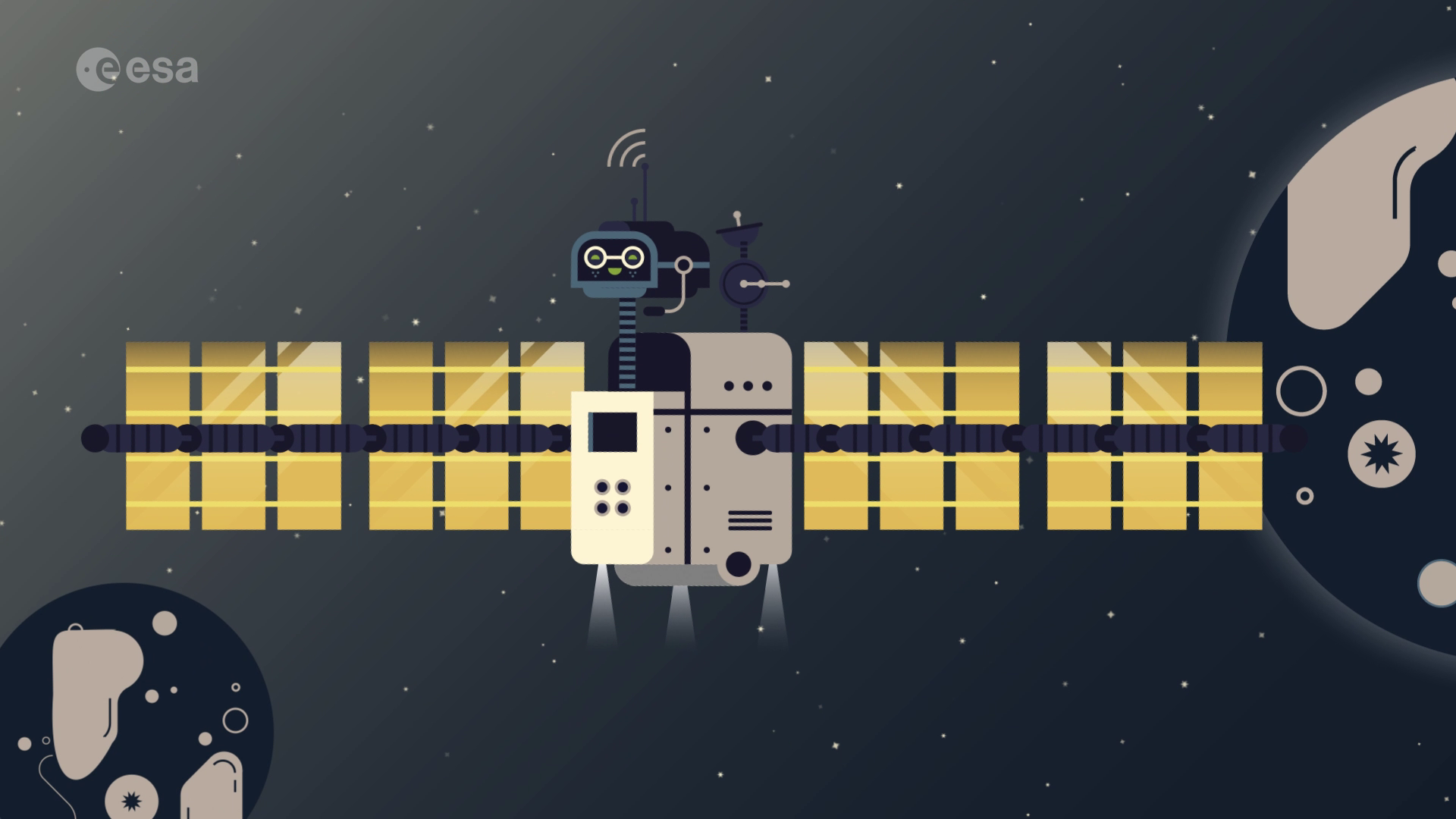
Access the video














 Germany
Germany
 Austria
Austria
 Belgium
Belgium
 Denmark
Denmark
 Spain
Spain
 Estonia
Estonia
 Finland
Finland
 France
France
 Greece
Greece
 Hungary
Hungary
 Ireland
Ireland
 Italy
Italy
 Luxembourg
Luxembourg
 Norway
Norway
 The Netherlands
The Netherlands
 Poland
Poland
 Portugal
Portugal
 Czechia
Czechia
 Romania
Romania
 United Kingdom
United Kingdom
 Slovenia
Slovenia
 Sweden
Sweden
 Switzerland
Switzerland











